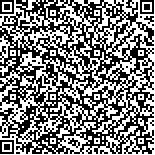| 摘要: |
| 基于 cox1 片段序列的 DNA 条形码为浮游动物种类鉴定提供了新的可靠手段, 构建了胶州湾网采浮游动物 DNA 条形码文库, 在国内首次使用宏遗传组学方法研究夏季胶州湾海洋浮游动物的群落组成。 共获得环境样品DNA条形码149条; 以6%为阈值共检出37个OUT, 其中19个与DNA条形码数据库中序列程度非常高(>97%), 可以鉴定到种。基于形态的镜检分析共观测到浮游动物 31种/类, 低于基于 DNA 条形码的分析结果。 全生活史阶段的浮游动物种类鉴定是 DNA 条形码相对于传统形态分类的最大优势, 基于 DNA 蟳 条形码的分析成功鉴定出日本 、 太平洋牡蛎等无脊椎动物的浮游幼体。研究结果表明, 通过构建环境样品的 cox1 序列文库, 可以实现海区浮游动物物种丰度和群落组成情况的快速评估。 |
| 关键词: 浮游动物, cox1 基因, DNA 条形码, 群落, 环境 |
| DOI:10.11693/hyhz201105012012 |
| 分类号: |
| 基金项目:国家海洋局海洋公益性行业科研专项, 200805042 号; 国家重点基础研究发展计划(973)项目, 2011CB403601号; 国家自然科学基金项目, 40821004 号; 中国科学院方向群项目, KZCX2-YW-Q07-05 号; 中国科学院对外合作重点项目, GJHZ200808 号 |
附件 |
|
| SPECIES COMPOSITION ANALYSIS OF ZOOPLANKTON IN THE JIAOZHOU BAY USING ENVIRONMENTAL BARCODING OF THE MITOCHONDRIAL cox1 GENE |
|
WANG Ren-Cheng1,2, WANG Min-Xiao1, CHENG Fang-Ping1,2, LI Chao-Lun1, SUN Song1,3
|
|
1.Key Laboratory of Marine Ecology and Environmental Sciences, Institute of Oceanology, Chinese Academy of Sciences;2.Graduate University of Chinese Academy of Sciences;3.Jiaozhou Bay Marine Ecosystem Research Station, Institute of Oceanology, Chinese Academy of Sciences
|
| Abstract: |
| Zooplankton plays vital roles in energy and matter transfer through the system. Here we present the first result of a zooplankton community study in the Jiaozhou Bay based on DNA barcodes. An environmental DNA barcode library was constructed to study zooplankton composition in the Jiaozhou Bay. A total of 149 mitochondrial cox1 gene sequences were determined from the cox1 gene library. The occurrence of 37 OTUs (species) was estimated when the genetic divergence of 6% was adopted as the threshold to separate different species. Based on the results from BLASTn analysis and Bayesian phylogenetic constructions on the DNA barcodes, 19 OTUs, which showed high degrees of similarity (>97%) between the query and database, could be identified to the species level. Compared to the results revealed by DNA barcodes, fewer species would be estimated using microscope analysis on the base of their morphological variations. The merozooplankton species, such as Chthamalus challengeri and Crassostrea gigas, identified by the DNA barcodes here were supposed to be sampled in the dispersal life history phase as pelagic larvae or eggs. Our results highlight the possibility of identifying larvae in the zooplankton samples using the DNA barcoding techniques. In conclusion, fast estimation of zooplankton richness can be achieved by the environmental DNA barcoding approach. |
| Key words: Zooplankton, cox1 gene, DNA barcodes, Community, Environment |
